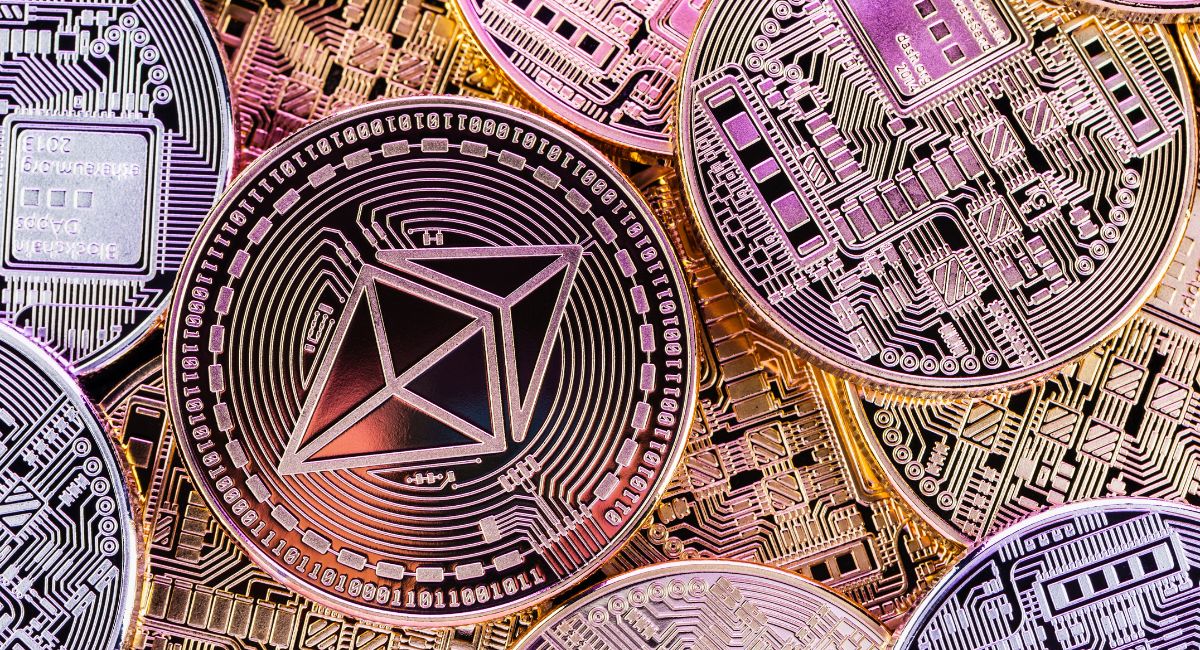Your Ultimate Guide To Ethereum Assets
Ethereum assets, also known as Ethereum-based assets or tokens, are digital assets that are built on the Ethereum blockchain. Ethereum is a decentralized, open-source blockchain platform that enables developers to create and deploy smart contracts and decentralized applications (DApps). It introduced a new programming language called Solidity, which allows for the creation of custom tokens and assets on the Ethereum network.
Ethereum assets can represent various types of digital and physical assets, such as cryptocurrencies, utility tokens, security tokens, non-fungible tokens (NFTs), and more. These assets are implemented using Ethereum’s native token standard called the ERC-20 standard, although other token standards like ERC-721 and ERC-1155 are also used for specific purposes.
ERC-20 tokens are fungible, meaning they can be exchanged on a one-to-one basis. They follow a set of rules and specifications defined in the ERC-20 standard, which ensures interoperability and compatibility between different Ethereum assets. These tokens can be traded, transferred, and stored just like any other cryptocurrency on Ethereum-compatible wallets and exchanges.
Utility tokens are one of the most common types of Ethereum assets. They represent digital assets that provide access to specific products, services, or platforms. For example, utility tokens can grant access to DApps, allow users to purchase goods or services, or offer special privileges within a particular ecosystem.
Security tokens, on the other hand, are a type of Ethereum asset that represents ownership in an underlying asset or company. They are designed to comply with relevant securities regulations, providing legal and regulatory compliance in the issuance and trading of tokenized securities. Security tokens can represent shares of a company, ownership in real estate, investment funds, or other traditional financial instruments.
Non-fungible tokens (NFTs) are unique digital assets that are indivisible and distinguishable from each other. They can represent digital collectibles, artwork, virtual real estate, in-game items, and more. NFTs have gained significant attention and popularity due to their ability to provide verifiable ownership and scarcity in the digital world.
Ethereum assets have gained prominence due to the Ethereum blockchain’s robustness, security, and the large developer community that supports the platform. Ethereum’s smart contract functionality allows for the creation of sophisticated decentralized applications, decentralized finance (DeFi) protocols, and various innovative use cases.
Ethereum assets can be created and issued through smart contracts deployed on the Ethereum blockchain. Smart contracts are self-executing contracts with predefined rules and conditions. They automatically enforce the terms of an agreement and facilitate the issuance, distribution, and management of Ethereum assets.
It’s important to note that while Ethereum assets offer exciting possibilities, investors and users should exercise caution and perform due diligence when dealing with them. As with any investment or digital asset, there are risks involved, such as price volatility, regulatory uncertainties, security vulnerabilities, and the potential for scams or fraudulent projects. It is advisable to research and understand the project, its team, and the underlying technology before engaging with Ethereum assets.
Also read: Ethereum 2.0 The Evolution of a Blockchain Giant: Scalability And Sustainability
Importance of Ethereum Assets for the Economy
Ethereum assets play a significant role in the economy by facilitating a wide range of financial activities, enabling new business models, and fostering innovation. Here are some key points highlighting the importance of Ethereum assets for the economy:
1. Decentralized Finance (DeFi): Ethereum assets have been instrumental in the growth of DeFi. DeFi refers to a set of financial applications and protocols built on blockchain networks that aim to provide open, transparent, and decentralized alternatives to traditional financial systems. Ethereum assets power various DeFi applications such as decentralized exchanges, lending platforms, stablecoins, yield farming, and more. DeFi has the potential to increase financial inclusion, reduce intermediaries, and offer new investment opportunities.
2. Tokenization of Assets: Ethereum assets enable the tokenization of real-world assets, including traditional financial instruments, real estate, art, intellectual property, and more. Tokenization represents the process of converting these physical assets into digital tokens that can be easily traded, divided, and accessed by a global audience. Tokenization has the potential to enhance liquidity, fractionalize ownership, streamline transactions, and enable new investment avenues.
3. Crowdfunding and Initial Coin Offerings (ICOs): Ethereum assets have facilitated the emergence of new fundraising models. Through ICOs, projects can raise capital by issuing and selling their tokens directly to the public. This has democratized access to funding, allowing individuals worldwide to participate in early-stage investment opportunities. Ethereum’s programmable smart contracts enable transparent and auditable distribution of tokens and funds, providing greater accountability and trust.
4. Innovation and DApp Development: Ethereum assets have fueled the growth of decentralized applications (DApps) and spurred innovation in various sectors. Developers can create DApps that utilize Ethereum assets to offer new services, products, and experiences. This includes areas such as gaming, digital collectibles, supply chain management, identity verification, decentralized social networks, and more. Ethereum’s open-source nature and extensive developer community contribute to a vibrant ecosystem that fosters continuous innovation.
5. Interoperability and Standards: Ethereum assets adhere to token standards like ERC-20, ERC-721, and ERC-1155, which provide interoperability across different projects and platforms. These standards ensure that Ethereum assets can be easily integrated into wallets, exchanges, and other blockchain-based services. This interoperability enhances liquidity, ease of use, and the overall ecosystem’s efficiency.
6. Global Accessibility: Ethereum assets are accessible to anyone with an internet connection, regardless of their geographic location or financial background. This opens up economic opportunities for individuals in underserved regions, enables cross-border transactions without traditional intermediaries, and promotes financial inclusion. Ethereum assets can be transferred quickly and securely, reducing friction in global financial transactions.
7. Programmability and Automation: Ethereum assets are programmable through smart contracts, allowing for the automation of financial processes and agreements. This programmability enhances efficiency, reduces the need for intermediaries, and enables the creation of complex financial instruments and protocols. Smart contracts facilitate self-executing agreements and ensure that transactions occur only when predefined conditions are met, reducing the risk of fraud and increasing trust.
Overall, Ethereum assets have transformed the economic landscape by introducing decentralized financial systems, enabling new fundraising models, promoting innovation, and expanding access to financial services. They provide individuals and businesses with new opportunities for investment, collaboration, and value creation, paving the way for a more inclusive and efficient global economy.
Also read: How Does Ethereum In Casino Work?
Top 10 Types of Ethereum Assets
Ethereum is a blockchain-based platform that allows for the creation of decentralized applications (dApps). These dApps can be used for a variety of purposes, including finance, gaming, and the creation of new assets.
There are many different types of Ethereum assets, but some of the most popular include:
- Ether (ETH): Ether is the native cryptocurrency of the Ethereum network. It can be used to pay for gas fees, which are required to execute transactions on the network.

- ERC-20 tokens: ERC-20 tokens are a standard type of token that can be created on the Ethereum network. They are often used to represent digital assets, such as shares in a company or in-game items.
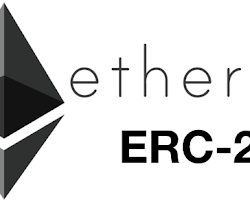
- NFTs: NFTs, or non-fungible tokens, are a type of token that represents a unique asset. They can be used to represent anything from digital artworks to real-world assets, such as property or cars.

- DeFi tokens: DeFi tokens are tokens that are used in decentralized finance (DeFi) applications. DeFi is a rapidly growing field that allows users to access financial services without the need for a central authority.
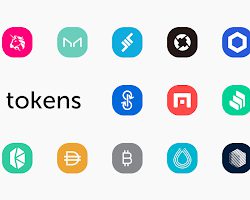
- Stablecoins: Stablecoins are a type of cryptocurrency that is designed to be pegged to a fiat currency, such as the US dollar. This makes them less volatile than other cryptocurrencies, making them more attractive to investors and businesses.

- Game tokens: Game tokens are tokens that are used in blockchain-based games. They can be used to purchase in-game items, to bet on games, or to earn rewards.
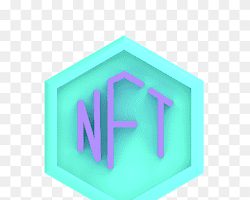
- Utility tokens: Utility tokens are tokens that give users access to a particular service or product. For example, a utility token might be used to access a decentralized exchange or to pay for cloud storage services.
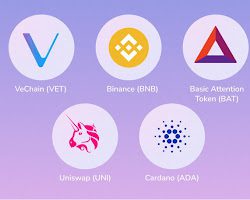
- Security tokens: Security tokens are a type of token that represents an ownership stake in a company. They are often used in initial coin offerings (ICOs) to raise capital for new businesses.

- Tokenized assets: Tokenized assets are assets that have been digitized and represented as tokens on the Ethereum blockchain. This allows them to be traded and managed more easily.
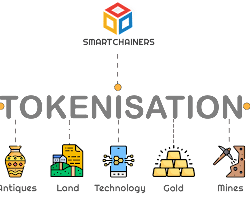
These are just a few of the many different types of Ethereum assets that exist. As the Ethereum ecosystem continues to grow, we can expect to see even more types of assets being created on the platform.
Risks associated with Ethereum Assets
While Ethereum assets offer numerous opportunities, it’s important to be aware of the risks involved. Here are some key risks associated with Ethereum assets:
1. Price Volatility: Ethereum assets, including cryptocurrencies and tokens, are known for their price volatility. Their values can fluctuate significantly in short periods due to market speculation, investor sentiment, regulatory announcements, technological developments, or macroeconomic factors. This volatility can lead to substantial gains or losses for investors.
2. Regulatory Uncertainty: The regulatory landscape surrounding Ethereum assets is still evolving. Different jurisdictions have varying views and regulations regarding cryptocurrencies, security tokens, initial coin offerings (ICOs), and other forms of digital assets. Regulatory changes or crackdowns can impact the legality, trading, and usage of Ethereum assets, leading to compliance challenges and potential loss of value.
3. Security Vulnerabilities: Ethereum assets are exposed to security risks inherent in blockchain technology. Smart contracts and decentralized applications (DApps) built on Ethereum are not immune to vulnerabilities or coding errors. Exploits, hacks, or bugs can result in the loss or theft of assets, unauthorized access, or manipulation of transactions. Users must exercise caution and perform due diligence when interacting with Ethereum assets and platforms.
4. Scams and Fraudulent Projects: The decentralized nature of Ethereum and the absence of strict regulations make it easier for fraudulent projects and scams to emerge. Investors may encounter fraudulent ICOs, fake projects, Ponzi schemes, or phishing attempts that aim to deceive users and steal their assets. It is crucial to research projects thoroughly, verify the credibility of the teams, and exercise caution when investing or participating in token sales.
5. Network Congestion and Scalability: Ethereum’s network has faced challenges with scalability, leading to network congestion and increased transaction fees during periods of high demand. This congestion can result in delays or increased costs for users when transacting with Ethereum assets. Additionally, as Ethereum continues to upgrade its infrastructure (e.g., Ethereum 2.0), there may be uncertainties and potential disruptions during the transition.
6. Lack of Regulation and Investor Protection: The decentralized and global nature of Ethereum assets means that they operate outside traditional financial systems and lack the same level of investor protection and recourse mechanisms. Unlike traditional securities or financial instruments, Ethereum assets may not have the same legal frameworks, investor rights, or avenues for dispute resolution. Investors must understand the risks associated with investing in unregulated assets.
7. Market Manipulation and Insider Trading: Cryptocurrency markets, including Ethereum assets, can be susceptible to market manipulation and insider trading. Illiquid markets, lack of transparency, and the presence of whales (entities holding large amounts of assets) can contribute to price manipulation, pump-and-dump schemes, and insider trading activities. Investors should exercise caution and be mindful of the potential for market manipulation.
8. Technical Complexity and User Error: Interacting with Ethereum assets requires technical knowledge, proper security practices, and understanding of blockchain technology. Users may face challenges in setting up wallets, managing private keys, or executing transactions correctly. Mistakes, such as sending assets to the wrong addresses or mismanaging private keys, can result in irreversible loss of funds.
It’s crucial for individuals interested in Ethereum assets to conduct thorough research, understand the associated risks, and exercise caution. It is advisable to consult with financial advisors, educate oneself on the underlying technology, and carefully assess the credibility and legitimacy of projects and platforms before engaging with Ethereum assets.
Also read: How To Secure Ethereum Assets- Top 10 Ways To Avoid Scams And Hacks
Future of Ethereum Assets
The future of Ethereum assets appears promising, as the Ethereum ecosystem continues to evolve and mature. Here are some key aspects that indicate the potential growth and development of Ethereum assets:
1. Ethereum 2.0 and Scalability: Ethereum is undergoing a significant upgrade known as Ethereum 2.0 or Eth2. This upgrade aims to address scalability issues by transitioning from a proof-of-work (PoW) consensus mechanism to a proof-of-stake (PoS) consensus mechanism. With Ethereum 2.0, the network’s capacity to process transactions is expected to increase significantly, leading to improved scalability and reduced transaction fees. This upgrade will enable more efficient and cost-effective transactions for Ethereum assets.
2. Improved Interoperability: Interoperability is a crucial factor for the future of Ethereum assets. Efforts are underway to enhance cross-chain compatibility and interoperability between Ethereum and other blockchain networks. Protocols like Polkadot, Cosmos, and Chainlink are working towards creating bridges and interoperable solutions, allowing Ethereum assets to interact with assets on different blockchains. This expanded interoperability will increase liquidity, enhance functionality, and enable seamless movement of assets across multiple networks.
3. Enhanced Privacy and Security: The Ethereum community recognizes the importance of privacy and security for its assets and users. Initiatives such as Ethereum Improvement Proposals (EIPs) and the development of privacy-focused technologies like zk-SNARKs and zero-knowledge proofs are being explored to enhance privacy and security in Ethereum transactions. These advancements will provide users with greater control over their data and assets while maintaining transparency and auditability.
4. Decentralized Finance (DeFi) Growth: DeFi has experienced tremendous growth on the Ethereum blockchain, and it is likely to continue expanding. DeFi protocols offer various financial services, including lending, borrowing, yield farming, decentralized exchanges, and more. As DeFi matures, Ethereum assets will play a crucial role in supporting these protocols and enabling the decentralized and permissionless financial ecosystem. The integration of real-world assets through tokenization will further enhance the scope and utility of Ethereum assets within the DeFi space.
5. Non-Fungible Tokens (NFTs): Non-fungible tokens (NFTs) have gained significant attention and popularity, and Ethereum has been at the forefront of the NFT boom. NFTs represent unique digital assets, such as artwork, collectibles, virtual real estate, and more. The future of Ethereum assets includes continued innovation in the NFT space, with new applications, marketplaces, and use cases. NFTs have the potential to revolutionize areas like art ownership, gaming, virtual experiences, and intellectual property rights.
6. Institutional Adoption: Institutional interest in cryptocurrencies and blockchain technology has been growing steadily. As the regulatory landscape becomes clearer and institutional frameworks and custodial services improve, more traditional financial institutions and corporations may embrace Ethereum assets. Institutional adoption can bring liquidity, stability, and further validation to the Ethereum ecosystem, attracting more users and investors.
7. Layer 2 Solutions: Ethereum’s Layer 2 solutions aim to address scalability and transaction speed challenges by offloading some transactional activities to secondary networks. Layer 2 solutions, such as state channels, sidechains, and rollups, can significantly increase the transaction capacity and efficiency of the Ethereum network. These solutions will enable faster and cheaper transactions for Ethereum assets, making them more practical for everyday use and mass adoption.
8. Regulatory Clarity: As the regulatory landscape around cryptocurrencies and digital assets becomes more defined, it is expected that clearer guidelines and regulations will emerge. Regulatory clarity can provide more certainty for users, investors, and businesses operating with Ethereum assets. It can also encourage institutional participation and foster responsible growth within the Ethereum ecosystem.
While the future of Ethereum assets holds significant promise, it is important to note that the landscape is still evolving. Factors such as technological advancements, regulatory developments, market dynamics, and community consensus will shape the trajectory of Ethereum assets. Continued research, innovation, and community collaboration will play a crucial role in unlocking the full potential of Ethereum assets in the years to come.
Also read: 10 Best Books To Learn About Ethereum To Understand Open- Source Blockchain
Stay informed with daily updates from Blockchain Magazine on Google News. Click here to follow us and mark as favorite: [Blockchain Magazine on Google News].
Get Blockchain Insights In Inbox
Stay ahead of the curve with expert analysis and market updates.
latest from tech
Disclaimer: Any post shared by a third-party agency are sponsored and Blockchain Magazine has no views on any such posts. The views and opinions expressed in this post are those of the clients and do not necessarily reflect the official policy or position of Blockchain Magazine. The information provided in this post is for informational purposes only and should not be considered as financial, investment, or professional advice. Blockchain Magazine does not endorse or promote any specific products, services, or companies mentioned in this posts. Readers are encouraged to conduct their own research and consult with a qualified professional before making any financial decisions. The featured image used is just a creative depiction of the title and it does not intend to hurt sentiments of any person or institution. If it hurts anyone sentiments, please do not hesitate to reach out to Blockchain Magazine.

 Bitcoin
Bitcoin  Ethereum
Ethereum  XRP
XRP  Tether
Tether  Solana
Solana  USDC
USDC  Dogecoin
Dogecoin  Cardano
Cardano  Lido Staked Ether
Lido Staked Ether  TRON
TRON  Chainlink
Chainlink  Wrapped Bitcoin
Wrapped Bitcoin  Sui
Sui  Wrapped stETH
Wrapped stETH  Avalanche
Avalanche  Stellar
Stellar  Hedera
Hedera  Toncoin
Toncoin  Shiba Inu
Shiba Inu  LEO Token
LEO Token  Hyperliquid
Hyperliquid  Bitget Token
Bitget Token  Litecoin
Litecoin  WETH
WETH  USDS
USDS  Polkadot
Polkadot  Bitcoin Cash
Bitcoin Cash  Ethena USDe
Ethena USDe  MANTRA
MANTRA  Wrapped eETH
Wrapped eETH  Uniswap
Uniswap  Ondo
Ondo  Pepe
Pepe  Monero
Monero  Aave
Aave  NEAR Protocol
NEAR Protocol  WhiteBIT Coin
WhiteBIT Coin  Mantle
Mantle  Official Trump
Official Trump  Aptos
Aptos  Dai
Dai  Internet Computer
Internet Computer  Ethereum Classic
Ethereum Classic  Bittensor
Bittensor  Cronos
Cronos  OKB
OKB  POL (ex-MATIC)
POL (ex-MATIC)  Gate
Gate 